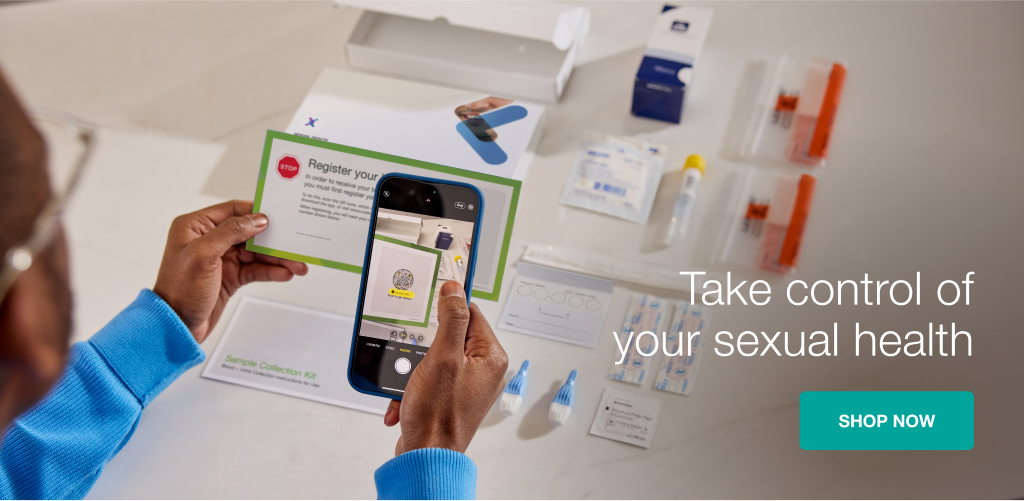For many of us, it’s been quite some time since we took a sexual education class. The truth is: It’s important to occasionally revisit these important topics we learned in school. Especially now, since federal family-planning surveys show that condoms – one of the best contraceptive methods for preventing the spread of sexually transmitted infections and diseases – went from the most used contraceptive among 75% of men in 2011 to just 42% of men in 2021.
As a result of these concerning trends and more, there has been a staggering increase in sexual transmitted infections (STIs) and sexually transmitted diseases (STDs) in the United States – with 2.5 million total infections in 2021, up from an already record-breaking 2.4 million in 2020. What’s more, syphilis rates shot up by 26% – the highest rate since the 1950s – with HIV cases rising by 16%, gonorrhea by 2.8% and chlamydia by 3%.

With condom use declining, here’s everything you need to know about preventing various STDs and the importance of getting tested.
STD Preventative Care
Although cases of STDs are on the rise, it’s important to know that most are preventable. In fact, there are several ways to protect your sexual health including abstinence, vaccination (especially in the cases of HPV and mpox), mutual monogamy, reducing your amount of sex partners and using condoms. Correct and consistent use of this contraceptive every time you engage in anal, vaginal or oral sex is highly effective at keeping you and your partner(s) safe since it provides a barrier between bodily fluids – the vehicle through which STDs spread. Note that no protective measure except for abstinence is 100% effective at preventing STDs and that getting tested is just as important.
Getting Tested for STDs
Even if you follow the protective measures outlined above, getting tested is a critical step in stopping STD transmission. Some STDs, such as chlamydia, may not show symptoms for months or years and cause serious long-term health issues. Consider having an open and honest conversation with your doctor and your sexual partner(s) before and after testing. The U.S. Centers for Disease Control and Prevention (CDC) has published the following STD testing guidelines:
- All adults between the ages of 13 and 64 should be tested at least once for HIV.
- All sexually active men who have sex with men (or people assigned male at birth) should be tested:
- Once a year for syphilis, chlamydia and gonorrhea
- Every three to six months for syphilis, chlamydia and gonorrhea if they have multiple or anonymous partners
- At least once a year for HIV
- At least once a year for Hepatitis C if living with HIV.
- Anyone who engages in behaviors that could place them at risk for infection (e.g., needle-sharing) should get tested for HIV at least once per year.
- Anyone who has had oral or anal sex should consider throat and rectal testing options.
Leandro Mena, director of the CDC’s Division of STD Prevention said it best: “It is imperative that we rebuild, innovate and expand STD prevention in the U.S.” That’s why we developed our complete Men’s Sexual Health panel designed to empower you to get lab-quality testing for STDs and STIs from the comfort and privacy of home. Together, we can stop the spread of these burdensome diseases and create a healthier future for all.
This information is presented in summary form, general in nature, and for informational purposes only. Content is not intended nor recommended to substitute for professional medical advice. For personal medical advice, always consult your doctor or other qualified healthcare professional. The tests offered are subject to change and subject to availability. Due to state restrictions, this Cue® Product is not available for individuals located in the state of New York. Other state restrictions may apply for specific tests. Please refer to our support page for detailed product terms and conditions.
References:
- https://www.washingtonpost.com/health/2022/11/23/stds-rise-chlamydia-syphilis-condom-use/
- https://www.axios.com/2022/09/20/std-increase-prevention-cdc
- https://www.cdc.gov/std/prevention/default.htm
- https://www.healthline.com/health/healthy-sex/what-stds-do-condoms-not-prevent#how-it-happens
- https://www.medicalnewstoday.com/articles/sti-testing
- https://www.cdc.gov/std/prevention/screeningreccs.htm



